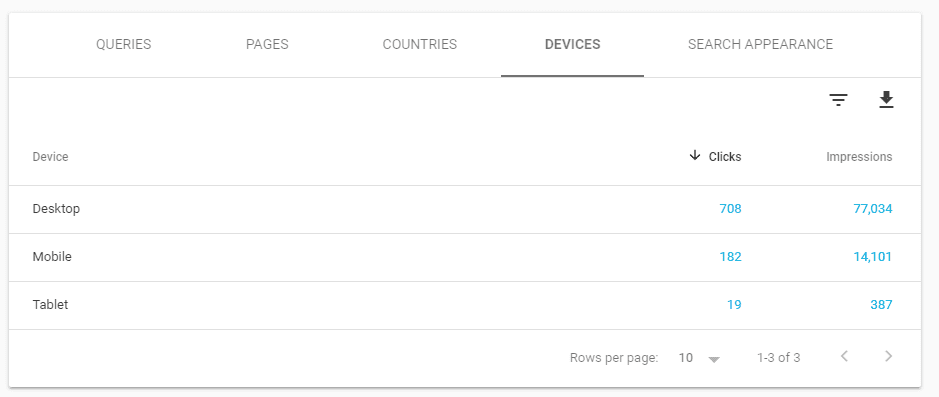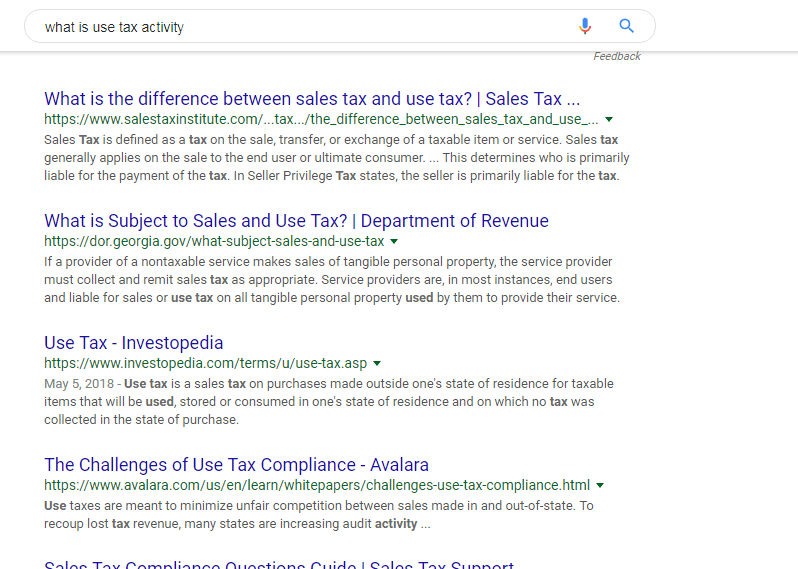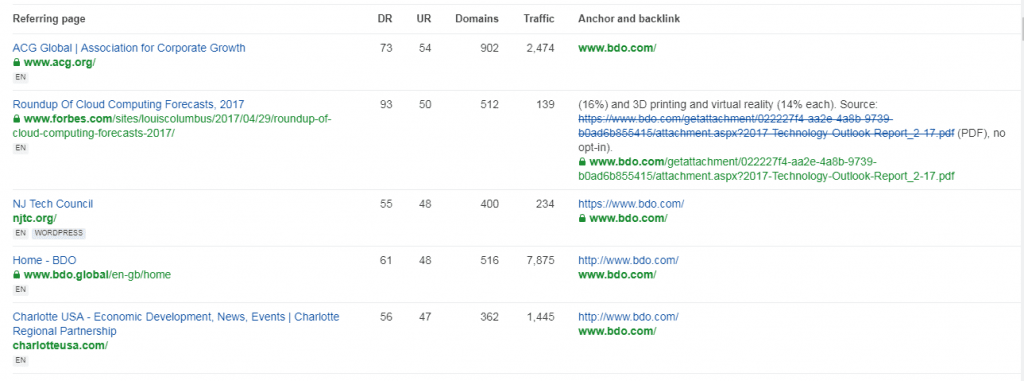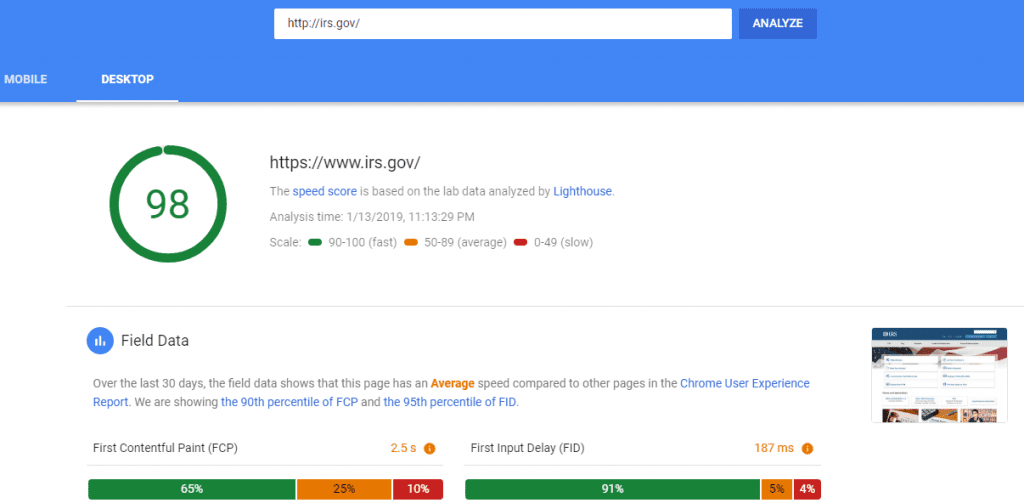SEO Guides, Tips & More!
Learn from Our Experience
3 SEO Hacks for Accounting Marketers
Search engine optimization has become a marketing specialty. Many accounting marketers struggle with knowing what they should do to increase their site’s exposure to clients, prospects and referral partners. While there are many steps that can be taken, most accounting marketers need to work in incremental steps because of resource issues, budget limitations, time constraints as well as lack of education on how to implement the needed changes. For larger firms, this has led to the introduction of digital marketers into the team. For others, it has required them to learn how to implement tactics independently. Whatever your situation there are some quick and easy hacks you can take to help increase your site’s rankings.
Get Creative with Google Search Console
Formerly known as Google Webmaster Tools, this free software provides a lot of useful information about a website’s health and performance. There is a message center that alerts you when there are site security issues, a tool which allows you to submit a sitemap, and even information on how well your mobile site is performing. While these are useful tools, there is another section that will show how the firm’s website is performing for keyword terms. What makes this interesting is you can see what terms are getting a high click-through rate (CTR) and which have a high number of impressions but are not performing as well.
The screen cap below shows a CPA firm’s website performance for the keyword terms “real estate cpa” and “what is use tax activity”. If you look at the second screen, across the top you can see Google offers information not only on the keyword queries conducted but also pages viewed, countries viewed from, devices as well as the search appearance. This is a lot of information that is not available in Google Analytics.


Using the example above, it’s obvious the firm is not doing a good job of getting visitors to convert based on certain terms. One quick change that can be made is to find the related content on your website (blogs, articles or service pages) that talk about these topics and add these terms into the content. Do note however that the addition should be natural and not awkwardly “jammed” into the content. Site visitors reading the content won’t like such a change and neither will search engines. Also consider adding a paragraph that starts out with the question, “What is use tax activity?” Then spend one or two paragraphs answering the question and provide examples. The more natural the information flows with the voice of the original content the better.
Also be sure to add these terms to the meta title and meta description sections of the on-page SEO. One thing to keep in mind is when you change meta description fields is to give the user a compelling reason to click through to your content. Far too many accounting marketers just copy and paste the first sentence of the paragraph as the description and this is not overly helpful.
Use the description as the place where you are going to tease and compel the prospect to want to click on your website over all the others. If we look at the search engine result page for the keyword term – “what is use tax activity” – it’s easy to see there are a lot of opportunities.
How many of these descriptions look like they have been carefully crafted by a marketing mind?

Rather than providing information on use tax activity or providing a definition of what a use tax is – take a different approach – provide a brief explanation of the content. Use terms like learn, uncover and discover which are all action terms. It’s important that the description make your content stand out from other content on the SERP. Give the searcher a reason to click on your content versus the other options, which may very well be quite bland.
My suggestion is to start with areas of the website that have a lot of existing content. For example, if your blog has 15 posts on business valuation related topics, I would start by searching through Google Search Console to find keyword opportunities related to business valuations.
Another point to think about is what happens if there are terms where the firm is ranking, but no content about the topic exists? I have seen this happen and it’s not only a fun surprise but also an opportunity. In this case, you need to decide if the keyword term represents an area the firm is targeting if you can get quality content around those terms and what the call to action will be. Obviously, getting ranked for new keyword terms is important, but chasing terms in areas where you don’t have the content resources can lead to a lot of frustration.
Start small and go for the easy wins. Use the information in Google Search Console to help drive keyword targeting and expand your firm’s presence in key areas.
Competitive Link Building
Links are an important way to gain the attention of Google and drive traffic to your website and its content. However, most accounting marketers are unsure where to start and how to go out and find the best websites to link to their firm site. While link building is an ongoing process there are immediate steps you can take to make an impact on your site’s link profile.
Run a Backlink Report
Start by running a report of the websites that are currently linking to your site. You can download a complete list in Google Search Console, using a paid program like Moz or SEM Rush or use one of the many free tools available online. If you are new to the world of SEO, consider using the free backlink checker available through Ahrefs. It will give you a complete report about the sites linking to your firm’s site (see example report below).
Once you have your report in hand, identify the firm’s top three to six competitors. Often accounting marketers will focus only on their geographical competitors only. If your firm has a specialty in 401k audits, be sure to include the niche competitors in that area as well. The more focused you can be the better the results and opportunities to enhance your site’s link profile.
Below is a backlink analysis for the BDO North America website – www.bdo.com.

You can see from the report above that bdo.com has backlinks from the Association for Corporate Growth, Forbes, NJ Tech Council and a few other sources. This is valuable information because not only does it show the URL these websites are linking to (mostly the BDO homepage) but also the anchor text used in the link.
Once you have run the report for your firm’s site and its top competitors, it’s time to start your analysis. Look for areas where your competitor is getting links from sites where your firm is not. If both firms are a member of the Association for Corporate Growth, there’s no reason your site is not also getting linked. Look at what content the Association is linking to on your competitor’s site. Is it just a link to the homepage because that company is a member or do they linking to a case study, whitepaper or other higher value content? The purpose of this exercise is to identify “low hanging fruit” for link building. It stands to reason if a site is linking to a competitor and your site has the same (or similar) content that they will also link to your site.
The final step in the process is to reach out to the webmasters for each of these websites and ask them to link to your site. It’s better for organic SEO to direct them to link to a service/industry page, blog post or other parcels of content rather than the homepage. Google assigns the homepage of your website highest page score. By suggesting the webmaster link to another page helps to increase the page’s rank value. While it may seem intimidating to reach out, it’s actually an easy process. Simply send an email to the webmaster or marketing team and explain who you and your firm are and what content you would like them to link to. Remember, if the link request is more than simply asking for a backlink because the firm is a member of the association, it’s important to clearly express in your email why they should give you the link. My suggestion is to look at the competitor content they are linking to and see if your site has similar information. If so, mention that you see they are linking blog post “X” on your competitor’s site and that your firm has a similar take on the same issue which may be of value. It’s important to make the reason why very clear. Be clear, friendly and concise and you’ll find in most cases, the backlink will be granted.
Check Page Load Time
Believe it or not, the time it takes your desktop and mobile website to load has an impact on search ranking. For example, did you know that as of July 1, 2018, mobile page load time was officially made a ranking signal by Google? Yes, it’s important and accounting marketers should regularly test their page load time to ensure it’s within Google’s best practices.
This image shows the results of a study conducted by Google about the impact that page load time has on bounce rate. (This is a percentage of site visitors that view a single page and leave the site).

There are several tools to assess your website’s load time but the two I like the most are gtmetrix.com and Google Speed Insights. While these tools work a little differently in terms of how they calculate page load time, they both offer important information.
The screen capture below shows the page load time of the IRS website. Since Google best practices dictate that a site should load in 3 seconds or less, it appears things don’t look so good for Uncle Sam. However, it’s unlikely they are worried about it, since the IRS is a site that is one-of-a-kind and contains high-value content.

The reason I like this tool is because one can click on the waterfall tab and see how long it takes each asset and resource to load. When there is a long delay, it’s generally an indication there is an opportunity for improvement. Often such changes require the assistance of a coder and it’s easy to send them a copy of the report to allow them to analyze the findings.
The screen cap below shows the same report for the same site from Google Speed Insights.

It appears the desktop version is getting a higher score from Google. (Guessing taxpayers may have a different opinion).

As you can see, Google offers insights for both desktop and mobile versions from a single location. They also provide a list of suggested changes which can help to resolve slow page load times. I recommend using this tool because it demonstrates how Google “sees” your website and it’s important to ensure it falls within their best practices as well.
Hack Away
SEO is a lot of fun, and once you see how your changes are positively impacting the firm’s website rankings it will be hard to take off your SEO hat to work on the next proposal or advertising campaign. If you have questions about SEO click here to contact us or call 626-684-4413.

